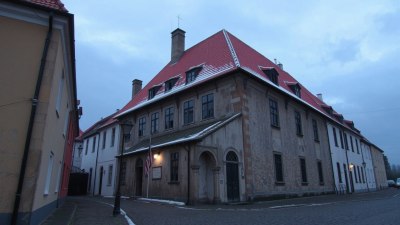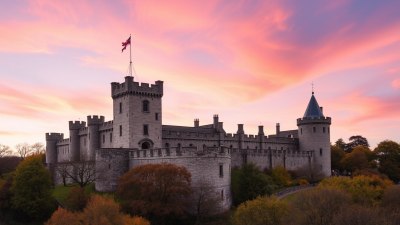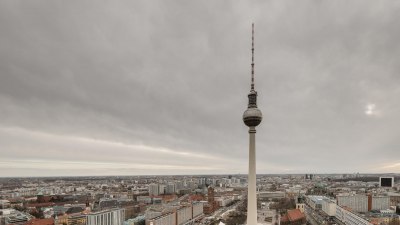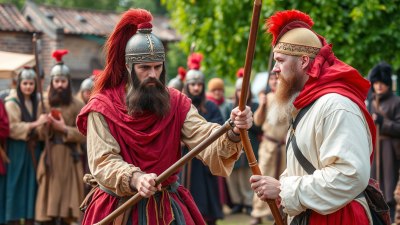The Forgotten Echoes of Narva, Estonia
Explore the rich history and culture of Narva, Estonia, through its forgotten echoes and vibrant heritage.

Narva, a city steeped in history, serves as a silent witness to the rich tapestry of cultural evolution in the Baltic region. Situated on the banks of the Narva River, it shares its borders with Russia, a geographical characteristic that has significantly influenced its historical narrative. Over the centuries, Narva has traversed the complex pathways of domination, conflict, and cultural amalgamation, serving as a strategic military point in various conflicts, most notably during the Great Northern War.
The city’s name, 'Narva,' is said to originate from the Estonian word for 'flow,' indicative of its location near the waterway that has been pivotal for trade and transport since ancient times. The echoes of the past resonate through the cobbled streets of the Old Town, where remnants of medieval architecture mingle with modern establishments, narrating the tales of yesteryears. Despite its fascinating history, Narva remains relatively underappreciated compared to its more prominent counterparts in Estonia, like Tallin and Tartu.
A Brief Historical Overview
The historical significance of Narva can be traced back to the 13th century when it was first recognized as a trading post. In 1346, the city fell under the control of the Teutonic Order, marking the beginning of its prominence in regional politics. The strategic location on the border offered ample opportunities for trade and military endeavors, positioning Narva as a vital hub in Northern Europe. Throughout the centuries, the city changed hands several times, including periods of Swedish control and Russian rule, each contributing layers to its cultural heritage.
The Impact of the Great Northern War
The Great Northern War (1700-1721) had a significant impact on Narva, particularly the pivotal Battle of Narva in 1700. The city was besieged and subsequently suffered extensive destruction. This battle showcased the city's strategic importance and was a catalyst for profound changes in the power dynamics of the region. The clash not only altered the course of the war but also highlighted the resilience of its people as they began the process of rebuilding.
Following the war, Narva underwent significant reconstruction, which saw the rise of new architectural styles infused with Baroque influences, a period that shaped much of the city’s aesthetic. The Narva Fortress, a testament to the city’s military past, is a prominent landmark adorning its skyline, symbolizing both protection and conflict. This fortress, alongside the nearby Hermann Castle, manifests the defense mechanisms employed throughout its tumultuous history.
Cultural Echoes of Narva
Culture in Narva is a fusion of various influences, reflecting the city’s historically diverse population. This blend of cultures creates an atmosphere that is distinctively Narvan. The Estonian and Russian communities coexist, contributing to a rich mosaic of traditions, languages, and customs. Festivals celebrated in Narva often illustrate this cultural interplay, showcasing folk dances, music, and culinary delights that draw from both cultures.
The Role of the Narva River
The Narva River itself is emblematic of the city’s identity, serving not only as a natural boundary but also as a conduit for life, commerce, and interaction. Historically, the river facilitated trade between different nations, embodying the spirit of connection. Today, it remains an integral part of the community, with recreational activities and scenic views attracting residents and visitors alike. The picturesque landscapes provide an ideal backdrop for leisurely strolls and moments of reflection, allowing individuals to contemplate the historical significance of the river that has witnessed centuries of change.
Modern Narva: A City of Resilience
In contemporary times, Narva illustrates a critical story of resilience and regeneration. The city is undergoing a transformative phase, with efforts directed towards rejuvenating its urban environment while preserving its historical essence. Local authorities and organizations are actively engaged in initiatives aimed at boosting tourism, enhancing infrastructure, and fostering cultural activities. This renewal is pivotal in redefining Narva’s identity for future generations, reconciling its past with the aspirations of a modern city.
One of the main projects is to revamp the city center, which has suffered over the years from neglect. This revitalization includes restoring historical buildings to their former glory while integrating modern amenities that cater to contemporary needs. These changes signify a broader movement within Estonia to embrace regional uniqueness while connecting it to national narratives.
The Development of Cultural Institutions
The establishment of various cultural institutions has played a transformative role in Narva’s modern revival. Art galleries and community centers have emerged as platforms to showcase local talents and promote artistic expression. The Narva Museum is a treasure trove of artifacts that depict the city’s rich history, providing visitors with insights into Narva's evolution over time. Educational programs are also being developed to engage the younger population, ensuring that the heritage of Narva is preserved for future generations. These initiatives not only focus on the historical significance but also aim to foster a sense of community and belonging among residents.
A Glimpse into Narva's Festivals
Festivals in Narva serve as a bridge between the past and present, celebrating the city’s diverse heritage. The Narva River Festival, held annually, is a vibrant explosion of colors, music, and culinary experiences that draw thousands to the area. Participants indulge in traditional dishes and enjoy performances reflecting the city's multifaceted identity, from folk dances to contemporary music.
Similarly, the Midsummer Festival celebrates the summer solstice, with bonfires, music, and vibrant displays of community spirit. These festivals not only enhance cultural engagement but strengthen the bonds between various ethnic groups, fostering a harmonious coexistence that defines Narva's uniqueness. Through these events, the echoes of the past find expression in the present, creating a tapestry of unity and celebration.
Preserving the Language: A Linguistic Heritage
Another critical aspect of Narva’s identity is its linguistic diversity, particularly the coexistence of Estonian and Russian languages. This multilingual environment not only reflects the historical narratives of the city but also presents challenges and opportunities for future generations. In recent years, local initiatives have been launched to promote the use of the Estonian language, particularly among younger residents. Educational programs focus on enhancing linguistic skills and fostering a sense of cultural pride.
Efforts to maintain the linguistic heritage of Narva underline its significance in fostering a cohesive community identity while embracing the plurality that defines the city. Language serves as both a vessel of culture and a means of communication, bonding individuals through shared stories and experiences. The promotion of bilingualism enhances cultural integration, serving as a reminder of the diverse roots that make Narva a unique entity in Estonia.
The Future of Narva
The future of Narva is bright as it carves its niche within the broader Estonian landscape. The city's commitment to integrating its rich history with contemporary advancements reflects a dynamic approach to urban development. As Narva progresses towards modernization, the balance between preserving historical identity and embracing an innovative future is vital. This journey is underscored by community participation and a mutual respect for the diverse voices that contribute to Narva's narrative.
As we look ahead, Narva stands as a testament to the power of shared history, resilience, and cultural heritage. The echoes of the past continue to reverberate through its streets and communities, breathing life into every corner. Acknowledging and celebrating these narratives is essential in forging connections as Narva embraces both its legacy and future. As new generations rise, the stories of Narva will persist, ensuring that the echoes of the past remain reverberant through time.











